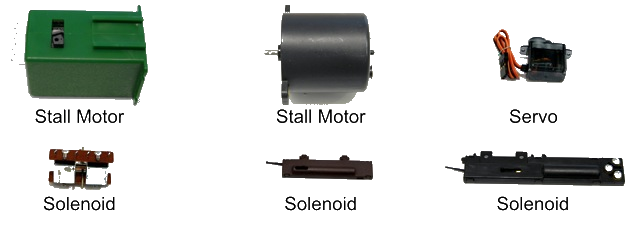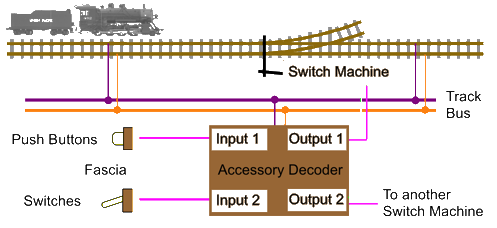The purpose of a switch (turnout) machine is to move the switch (points) to a different position so that a train’s route is changed. There are several types of machines. Below are pictures of some common switch (turnout) machines. A switch (turnout) machine is an electromechanical device that moves a lever or arm when a voltage is applied. Each type has advantages which includes size, ease of installation, type of control and cost.
Solenoid or twin coil – A momentary voltage causes a lever to moves to 1 of 2 positions.
Stall motor – A constant voltage causes a lever to moves to 1 of 2 positions*
Servo – A stream of voltage pulses causes a lever to moves to many different positions.
* Note: The meaning of “stall motor” used to be synonymous with Tortoise™ which has a very low current draw. However, more motors are being called “stall”. For example the Cobalt is being called a stall motor yet requires ~ twice as much current as a Tortoise™. This does not necessarily make the Cobalt a bad motor. It means before you purchase an accessory decoder find out what kinds of “stall motors” it can drive. Note: 1/22/15 the Cobalt iP Analog has a much lower current requirement.

To remotely control a switch machine in a DCC system an electronic device called an accessory decoder is required. Accessory decoders receive commands (instructions) via DCC commands that are present on the track just like a loco decoder. Wherever the throttle is located, accessory control is available. Some throttles and DCC systems do not provide for turnout control.

